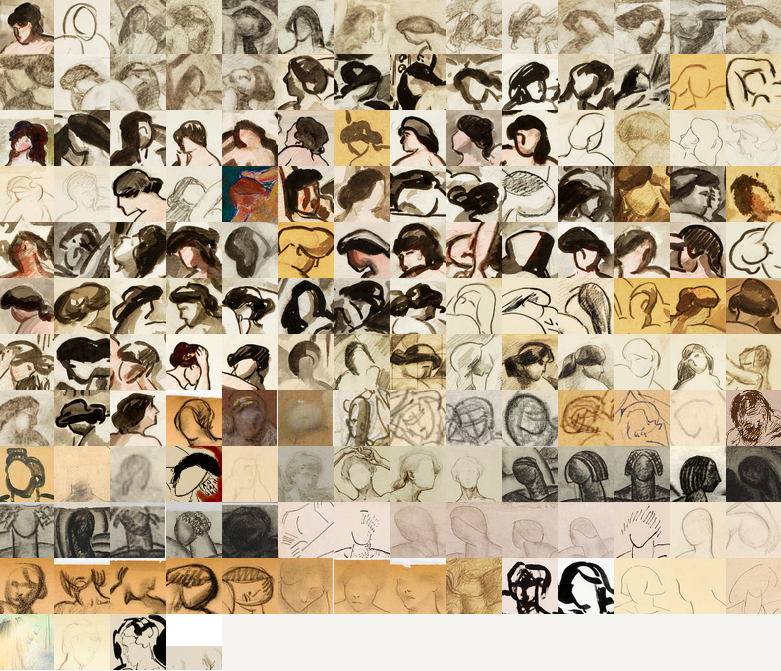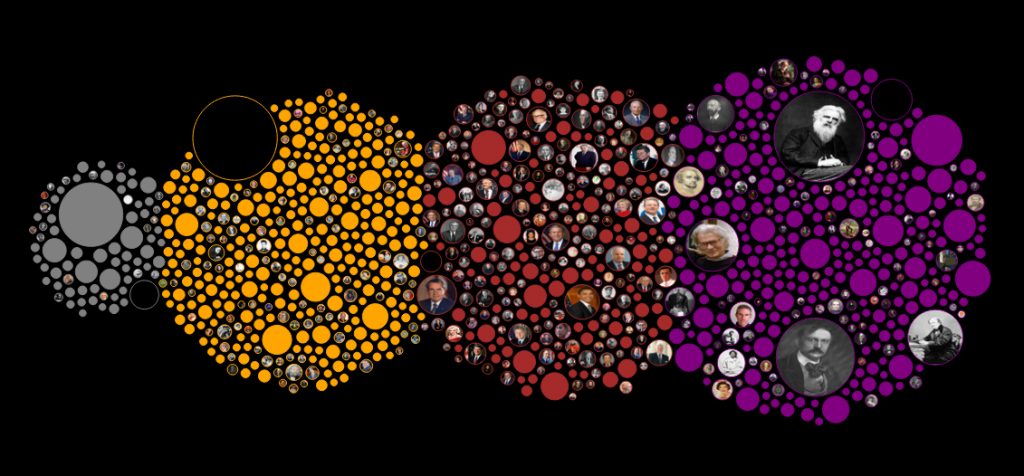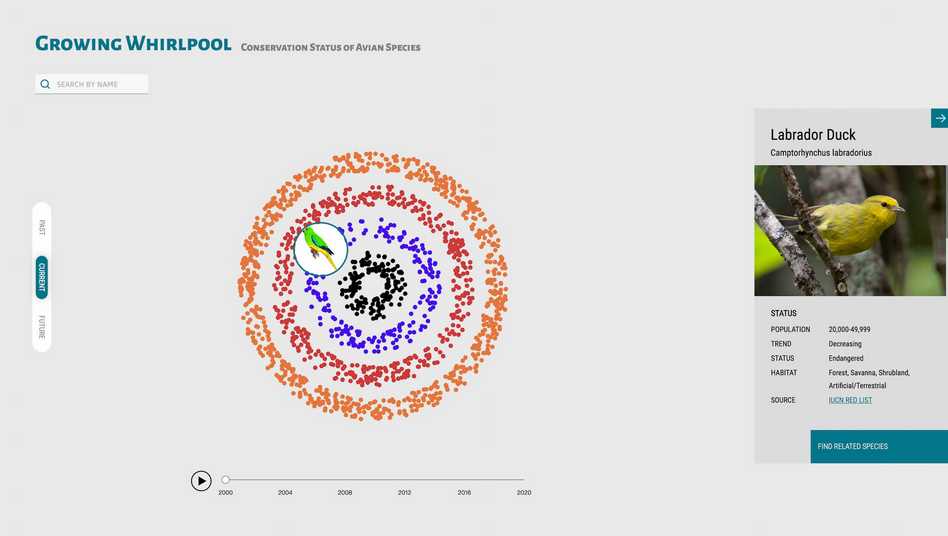
MS Data Visualization Collaborates with the Smithsonian Museum for Digital Archive Project
What Makes a Buddha. A Manifestation of Masks. Smithsonian Rock Ranger. Gender Tagging. While the titles of these projects, plus many more, might not seem like they have anything to do with each other, they are all in fact explorations and interpretations by Parsons MS Data Visualization students of artistic data published by the Smithsonian Institute’s Open Access Policy.
In the first semester of the MS Data Viz program, students always collaborate with an external data partner in order to explore real-world visualization projects, which in the past has meant partnerships with the UN Poverty Lab and The Met Museum. Recently, the Smithsonian Institute launched their Open Access initiative, releasing 2.8 million images, metadata, and research data sets into the public domain, which made them an ideal partner for the Data Viz program.
“The breadth and diversity of these data were exciting to us, spanning across culture, history, science and technology,” says Richard The, Assistant Professor of Design and Technology, and the faculty lead for the course.
For the students, their investigations led to surprising discoveries about a wide variety of topics, including the reasons for why certain prominent women were featured in The National Portrait Gallery, an uncovering of the mythical beasts in asian art that only appear in mythology stories, and an observation about nude art in the Smithsonian Institute: 91.4% of nude drawings featuring females have breasts, while 37% are faceless.
“Working with the Smithsonian is helpful in so many ways, because the students learn how to work with the messiness of working with real data in the real world,” explains The. “They get to learn from an external partner and see things from their perspective, in terms of expertise and communication goals. Lastly they get to create visualization projects about amazing artifacts and data sets they would otherwise not have access to.”

Collaborating with a world-renowned institution like the Smithsonian Institute also allowed the students in the program to rethink the ways people can experience a museum during the current coronavirus pandemic. Students were also able to explore ideas that they might not otherwise have had access to, and were able to do so with relative ease while studying and working from home.
“Creating data visualizations with the Smithsonian open access initiative felt like experiencing what it may be like being a curator; trying to discover an original yet data-driven story at the museum, but doing so remotely at home,” says Inhye Lee, a student in the course. “Because I worked on this project at the peak of pandemic, it also became a chance to think about how we may re-envision the experience of physically being at the museum when most people cannot travel to be there.”

The MS Data Viz students also played an integral role in helping improve the new tool from the Smithsonian Institute by giving immediate feedback on what worked well within the interface, and what fixes were necessary to help future researchers and people engaging with the tool.
“As with most data-driven journeys there’s a constant sine wave of opportunities and surprises,” explains Lee Kuczewski, a student in the course. “Some of the early technical opportunities came up for our class around a fairly nascent API. This interface is the way in which we obtain the data to then visualize, and the queries can become somewhat difficult to obtain due to a variety of data structures across the diverse collections. The staff at the Smithsonian and their data science team were incredibly responsive to our needs early on, and made changes specifically on behalf of requests from individual students.”
Now that the Open Access Initiative is up and running, the student projects will be accessible to all, and will help further facilitate new discoveries and important research.
“All one has to do is look at any one of these 3 million objects to find insights and inspiration to fuel the adventures of exploring,” says Kuczewski. “It’s critical to acknowledge this leap taken by the Smithsonian and those who enabled the open access initiative; it’s a timely and necessary program to extend public engagement and access around shared histories.”
